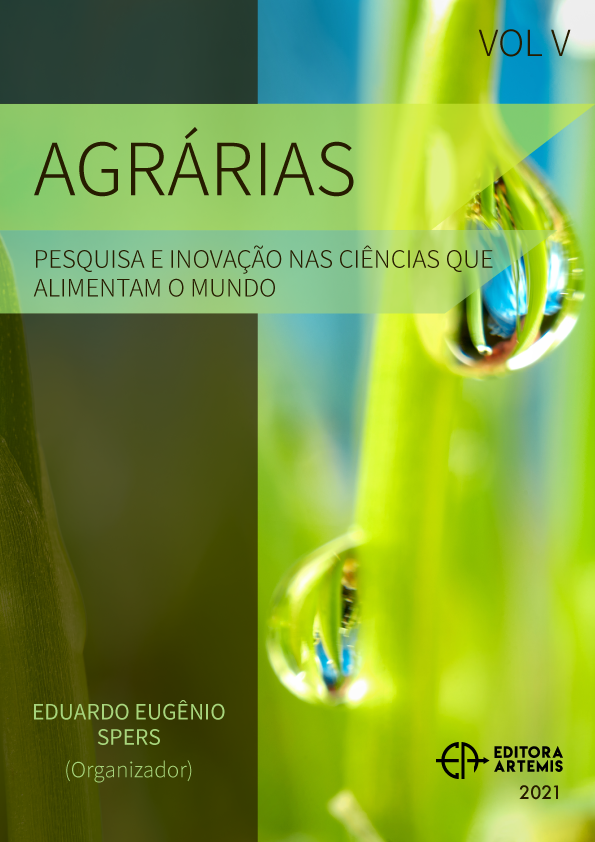
PRODUCCIÓN PRIMARIA NETA AÉREA DEL COMPONENTE HERBÁCEO DE SISTEMAS SILVOPASTORILES EN LA LLANURA ONDULADA DEL SUR DE CÓRDOBA
El objetivo del trabajo fue estudiar la producción primaria neta aérea y la eficiencia del uso del agua (EUA) de un verdeo de Avena sativa en tres sistemas silvopastoriles. El ensayo se desarrolló en el campo de docencia y experimentación Pozo del Carril, ubicado a los 32° 58’ S y 64° 40’ O. Los sistemas silvopastoriles fueron instalados en la primavera de 1998 mediante una plantación de tres especies forestales que determinó callejones cultivables. En marzo de 2012 se realizó la siembra de avena en dichos callejones y en un lote testigo sin árboles. Los resultados mostraron que en las parcelas integradas por Pinus elliottii y en Quercus robur la producción de avena no presentó diferencias con respecto al testigo sin árboles (p<0,05), mientras que en la que estuvieron integradas por Eucalyptus viminalis la producción de forraje fue menor. La biomasa herbácea en la zona central de los callejones, tanto en P. elliottii, como en Q. robur fue similar o superior a la del testigo dependiendo si la disponibilidad de agua fue suficiente o menor a la demanda hídrica del cultivo, respectivamente (p<0,05). La EUA mostró un patrón similar a la de la biomasa aérea. Las parcelas integradas por E. viminalis fueron las menos eficientes, mientras que en los sistemas con P. elliotti y Q. robur, el sector del callejón donde se encontró la mayor EUA fue la zona central y las exposiciones al norte de las hileras de árboles.
PRODUCCIÓN PRIMARIA NETA AÉREA DEL COMPONENTE HERBÁCEO DE SISTEMAS SILVOPASTORILES EN LA LLANURA ONDULADA DEL SUR DE CÓRDOBA
-
DOI: 10.37572/EdArt_2904213474
-
Palavras-chave: sistemas agroforestales; Avena sativa; sistemas en callejones; biomasa herbácea; eficiencia del uso del agua
-
Keywords: agroforestry systems; Avena sativa; alley farming; herbaceous biomass; efficiency of water use.
-
Abstract:
The objective was to study the net primary air production and water use efficiency (WUE) of a pasture of Avena sativa in three silvopastoral systems. The test was carried out in the teaching and experimentation field, Pozo del Carril, located at 32° 58’ S and 64° 40’ W. The silvopastoral systems have an alley structure and the trees were planted in the spring of 1998. In March 2012 oat was planted in these alleys as well as in a control field without trees. The results showed that in the plots of Pinus elliottii and those of Quercus robur the oat production did not present any differences compared to that of the control field without trees (p<0.05), while in the case of Eucalyptus viminalis the herbage production was inferior. In the case of the Pinus elliottii and that of Quercus robur, when the demand for water was met, in the central area of the alleys the herbaceous biomass increased to control values. But when moisture conditions were insufficient, the central points of the same alleys had a higher production than that of the control (p><0.05). As for the WUE, the eucalyptus plots were the least efficient. With regard to pine and oak, the area of the alley with the greatest water use efficiency was found in the central area and the area exposed on the north side of the lines of trees.> < 0.05) while in the case of Eucalyptus viminalis the herbage production was inferior. In the case of the Pinus elliottii and that of Quercus robur, when the demand for water was met, in the central area of the alleys the herbaceous biomass increased to control values. But when moisture conditions were insufficient, the central points of the same alleys had a higher production than that of the control (p<0.05). As for the WUE, the eucalyptus plots were the least efficient. With regard to pine and oak, the area of the alley with the greatest water use efficiency was found in the central area and the area exposed on the north side of the lines of trees> < 0.05). As for the WUE, the eucalyptus plots were the least efficient. With regard to pine and oak, the area of the alley with the greatest water use efficiency was found in the central area and the area exposed on the north side of the lines of trees.
-
Número de páginas: 13
- José Omar Plevich
- Marco Jesús Utello
- Juan Carlos Tarico
- Santiago Ignacio Fiandino
- Ángel Ramón Sánchez Delgado
- Javier Enrique Gyenge

